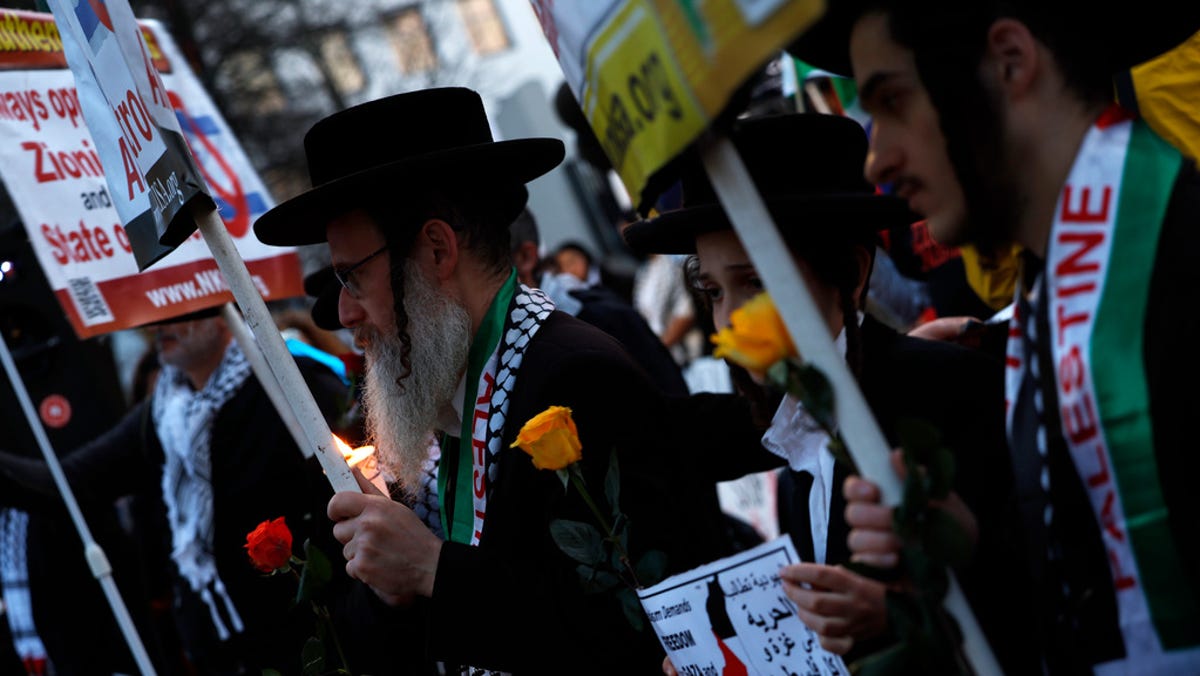The active duty U.S. Air Force member who set himself on fire in front of the Israeli Embassy has died of his injuries, the Metropolitan Police Department confirmed on Monday.
Aaron Bushnell, 25, of Whitman, Massachusetts, lit himself on fire in front of the embassy on Sunday afternoon. First responders took him to a hospital, where he later died, the MPD said.
Bushnell began livestreaming to Twitch as he approached the embassy, declaring that he “will no longer be complicit in genocide,” a person familiar with the matter told the Associated Press. The person was not authorized to publicly discuss the details of the investigation and spoke to the AP on condition of anonymity.
Officials believe Bushnell started the stream, set his phone on the ground, poured liquid over himself, and lit himself on fire. The video was removed from Twitch, but a copy was obtained and reviewed by investigators.
MPD said in an email that it is aware of the video but “is not confirming the authenticity of this video as it is part of the investigation.”
The Air Force confirmed on Monday that Bushnell is an active duty member and was a cyber defense operations specialist with the 531st Intelligence Support Squadron at Joint Base San Antonio Lackland, Texas. He served on active duty since May 2020.
“When a tragedy like this occurs, every member of the Air Force feels it,” said U.S. Air Force Col. Celina Noyes, 70th Intelligence, Surveillance, Reconnaissance Wing commander. “We extend our deepest sympathies to the family and friends of Senior Airman Bushnell. Our thoughts and prayers are with them, and we ask that you respect their privacy during this difficult time.”
The MPD said police are working with the Secret Service and the Bureau of Alcohol, Tobacco, and Firearms to investigate the incident.
Attempts to reach Bushnell’s family were unsuccessful on Monday.
Protests against war in Gaza grow
In December, a protester set themselves on fire in front of the Israeli consulate in Atlanta. Although officials did not confirm whether the act was a form of protest, police found a Palestinian flag near the scene.
Protests in support of Palestinian rights and against U.S. military support for Israel have been widespread since Israel launched its invasion of Gaza in retaliation for Hamas’ surprise attack on Oct. 7.
The ongoing Israeli operation has now killed more than 29,000 people, according to the Gaza Health Ministry. The death toll could grow as Israel announced plans to possibly invade Rafah, where many of the enclave’s residents have sought shelter away from the battle.
Across the United States, protesters have shut down major roads like the Los Angeles Freeway, entered Congress, and interrupted speeches and testimony by Biden administration officials.
Late last month, as Biden held his first official major campaign rally of 2024, demonstrators repeatedly shouted, “Cease-fire now!” and “Genocide Joe!”
On Jan. 13, thousands gathered in Washington, D.C., to protest ongoing U.S. support for Israel’s war. The nation’s capital also drew a crowd of demonstrators on Nov. 4, as crowds in cities across the world marched to demand an immediate cease-fire in Gaza.
A group of demonstrators holding a banner reading “Liberation for Palestine and Planet” also interrupted the Macy’s Thanksgiving Day Parade in New York in November.
Some protests even entered the world of virtual reality, with pro-Palestinian marches taking place in the virtual universe of Roblox.
Self-immolation as protest
Self-immolation as a form of protest stretches back centuries, but first entered America’s cultural consciousness during the movement against the Vietnam War in the 1960’s.
The self-immolation of Vietnamese Buddhist monk Thich Quang Duc in the streets of Saigon on June 11, 1963, became one of the most famous protests in history. The photographs of Quang Duc’s extreme protest against the regime of U.S.-backed President Ngo Dinh Diem, captured by AP photographer Malcolm Browne, shocked the world and fueled the movement against the Vietnam War.
As U.S. involvement in Vietnam deepened, American anti-war demonstrators took up extreme forms of protest, including self-immolation. In March of 1965, Alice Herz, an 82-year-old German Jewish immigrant and peace activist, became the first known American to engage in protest against the war by lighting herself on fire, according to the Center for Independent Documentary. As she was taken to the hospital, she said, “I did it to protest the arms race all over the world,” the Detroit Free Press reported at the time.
Later that year, Norman Morrison, a 31-year-old Quaker activist from Baltimore, carried out the most famous act of self-immolation undertaken by an American in protest of the Vietnam War. One evening in November, Morrison brought his 11-month-old daughter and a can of kerosene inside a picnic basket to the Pentagon and lit himself on fire underneath the office window of Defense Secretary Robert McNamara, according to WETA. His daughter survived, but Morrison died of his injuries.
In 2010, Mohamed Bouazizi, a 26-year-old Tunisian street vendor, set himself on fire in the city of Sidi Bouzid in an act of protest widely credited with igniting the Arab Spring. Bouazizi’s self-immolation was seen as a protest against poverty and rising prices, according to the New York Times. Footage of the demonstrations after the act sparked uprisings throughout the region, including Egypt, Syria, Libya, Yemen and Bahrain.
Contributing: Tom Vanden Brook, USA TODAY; The Associated Press

